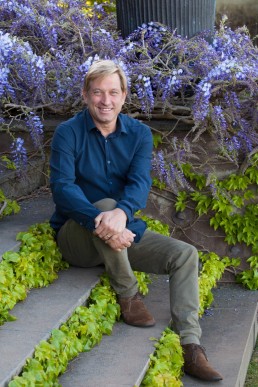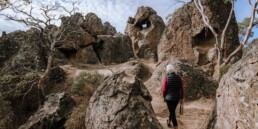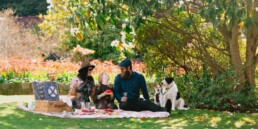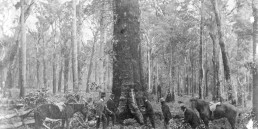Paul Bangay has touched the hearts of many a green thumb, but we’d like to think his heart is deeply entwined with the many gardens he’s nurtured in the Daylesford Macedon Ranges.
We had a chance to dig deeper, discovering this Medal of the Order of Australia recipient’s connection with our region and his approach to gardening that we’ve come to love and admire.
You have been instrumental in the design and creation of some incredible gardens within our region. What is your connection to the area? Are there gardens ON WHICH you look back fondly?
When I was young, I spent many amazing weekends at Marnanie in Mt Macedon; this was the home of the celebrated – and now late – Kevin O’Neill. The garden was magical, and the time spent in it and its unique coolness made me fall in love with both the climate and the region. As soon as I could afford my own country garden, I bought the old schoolhouse in Woodend. This was over twenty years ago, and I have never fallen out of love with the region, only more in love. I have created many gardens in the area since, including two of my own.
Can you describe the climate, soil conditions and plants you have used?
The main advantage of the central highlands is the cool climate, and this allows you to grow many plants that you can’t elsewhere. One of my favourites is Cardiocrinum giganteum, the giant Himalayan lily. I have planted many in my garden and enjoy their amazing perfume when they flower at Christmas. The deep, well-drained, rich soil and climate of our region is perfect for growing many different types of plants, from tender woodland plants to hardier perennials. The reason I chose the site for Stonefields was for all these reasons above, I can experiment with many planting schemes, and I just love this.

With your Stonefields property, can you describe the challenges you have had with your design and plants used?
When it comes to Stonefields, I know from experience that we need to choose plants that tolerate frost, snow and extreme heat. It’s vital to know that we have these extreme weather conditions. The plants that tolerate this are usually European in style, and this is my preferred planting mix.
The main challenge to the site was the slope. Stonefields, perched on the edge of a steep hill, required garden spaces carved into this hill. This involved a lot of earthworks to form terraces. The main terrace to the front of the house needed to be at an exact level to ensure the view of the valley remained unobstructed.
Our area has distinct seasons, how does this influence your design, and what will visitors see while visiting the area in summer?
Summer is the time for flowering perennials, and due to their high tolerance to heat and dry conditions, we have planted many of them.
When visiting the garden in summer, you will see the front blue borders in full bloom as well as the deep planting beds that surround the pool and the terraces below. Seasons are very important, I like the garden to change throughout the year, not be static, and the seasons enable us to achieve this.
If you could describe the perfect outdoor adventure in our region, what would it entail?
Visiting and walking to the Trentham Falls and then going on to du Fermier for lunch in Trentham. The greatest attraction for me is the wealth of excellent restaurants, and du Fermier is one of the best we have to offer.
Stonefields epitomises Paul’s talent working with the unique conditions in our region. It can be viewed by private booking, which is a special opportunity for garden lovers to enjoy the surrounds in the company of Paul.
@paulbangay
paulbangay.com
stonefieldsthefarmhouse.com
Du Fermier, Trentham anniesmithers.com.au/du-fermier
Share this article
While You're Here
Destination Wellness
The Daylesford and Macedon Ranges region is renowned for its world-class spas and outstanding…
Health & Wellness,Eat & Drink,Places to stay,Outdoor Experiences
Summer
Just the name evokes thoughts of long, balmy days, playful breezes and long, cool drinks.
The Art of Picnicking
Gather your people, swing by a provedore and lay the rug down at a picture perfect spot. The…
Walk on the Wild Side
Standing on the top of Porcupine Ridge, the forest falls away to the river below. On the other side…
Where do the Locals in the Daylesford Macedon Ranges Go?
It's often the first thing you wonder when you travel: 'Where do the locals go? That's sure to be…
Outdoor Experiences,History & Culture,Health & Wellness,Eat & Drink,Shopping
The Lost Children
On a quiet country lane, on the crest of a hill overlooking Daylesford, is a small stone memorial…







